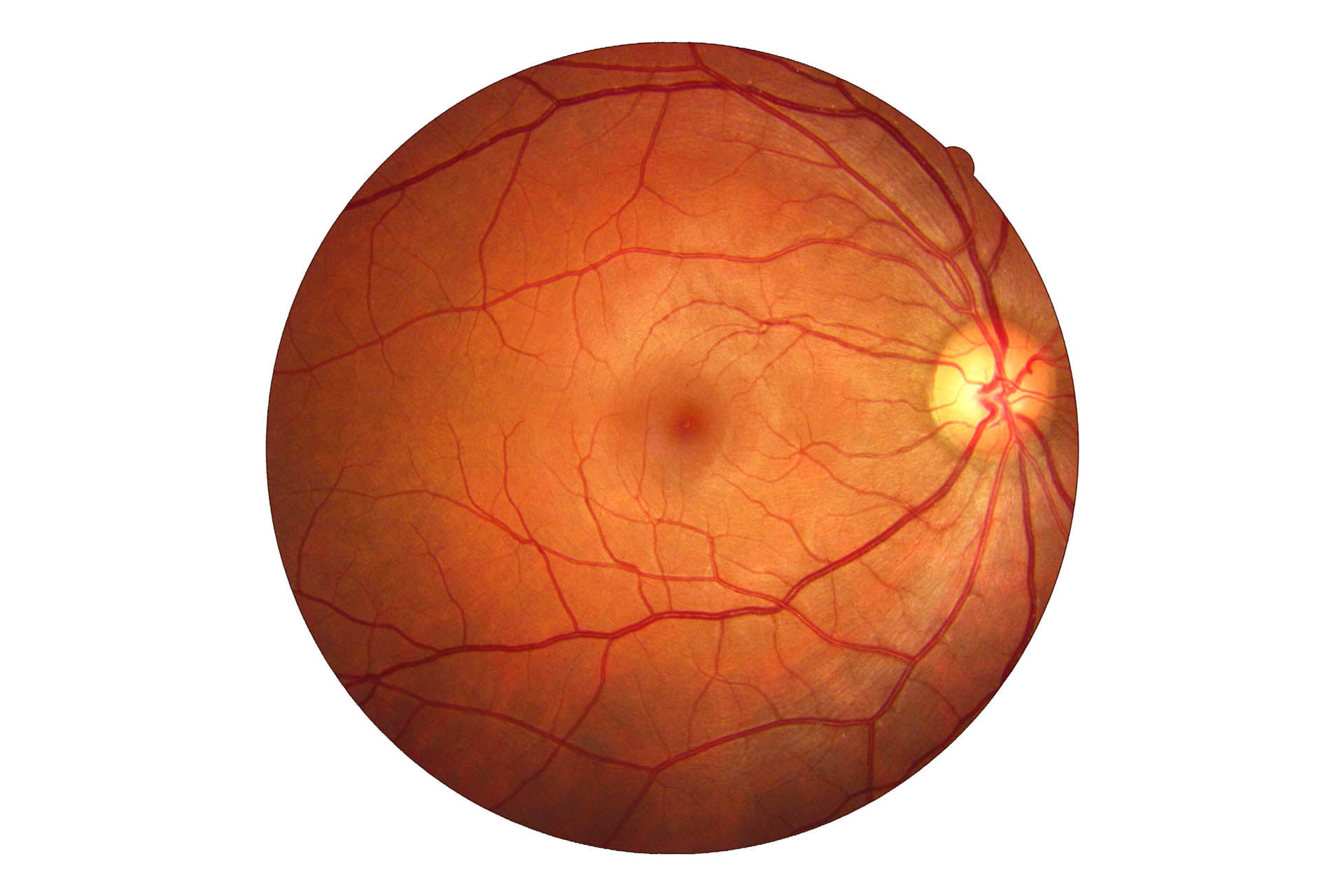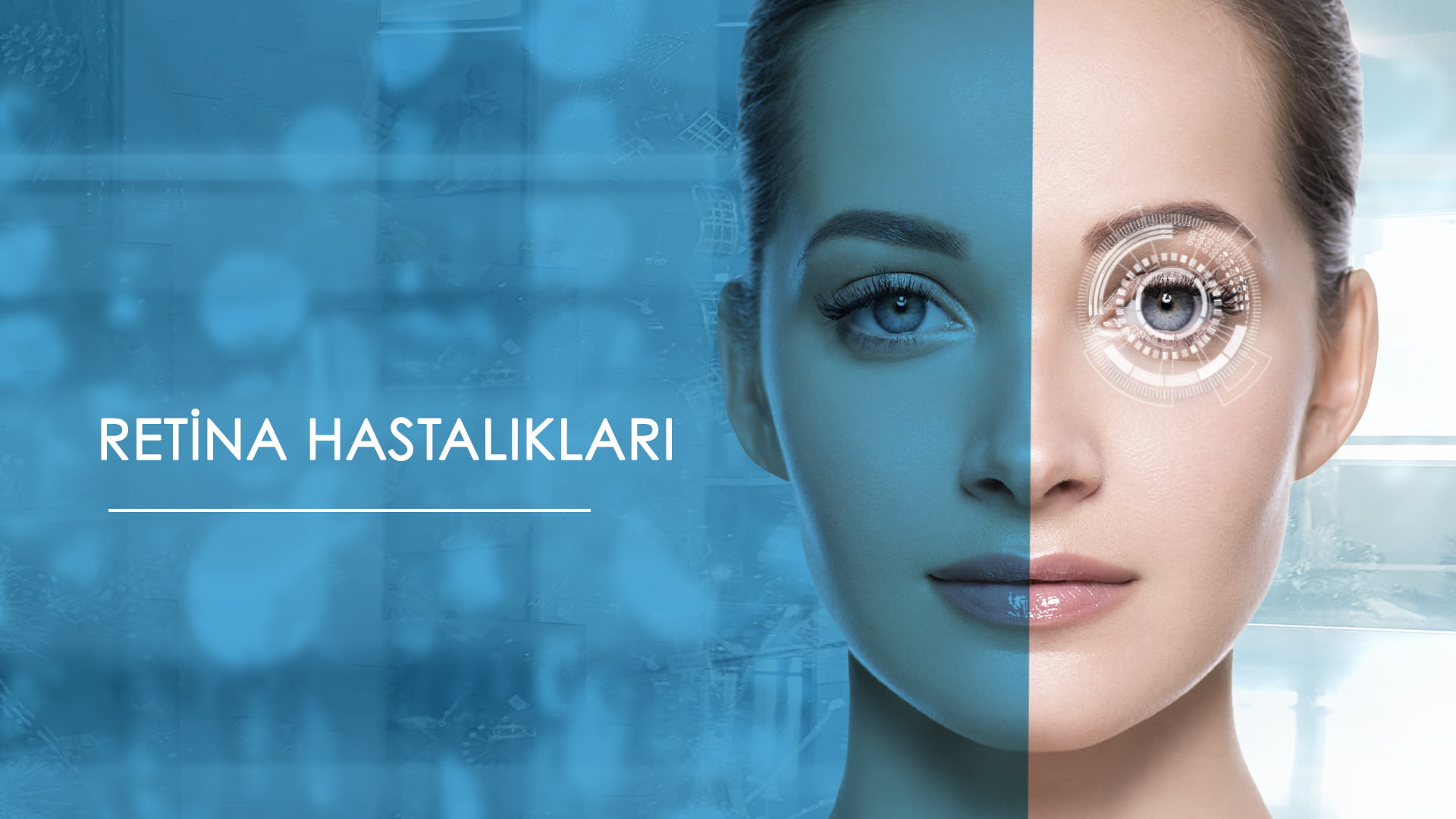Retinal Diseases
Retina is derived from the Latin word “rete” meaning network. The final stage in the vision process is the conversion of the image into signals that can be interpreted in the brain. This event takes place thanks to the retina.
SUBJECT TITLES
- What is Retina? What is its structure?
- How Does the Retina Function?
- What are Retinal Diseases?
- What Causes Retinal Diseases Occur? What are the symptoms?
- Macular Degeneration (Age-related Macular Degeneration)
- Diabetic Retinotherapy
- Retinal Detachment
- Retinitis Pigmentosa (Night Blindness)
- How is Retinal Examination Performed?
What is Retina? What is its structure?
Retina is the sensory network layer located at the back of the eyeball, consisting of billions of light-sensitive vision cells and responsible for transmitting the image to the brain through nerve cells.

Thickness 0.1 to 0.5 mm between. It has a translucent appearance and is between pink and red in color. This layer, which covers the back wall of the eyeball, consists of 10 different layers and is adhered to the eyeball.
There are two types of photoreceptor cells in the structure of the retina: rods and cones. These cells in the retina convert light energy into electrical signals that are processed and then sent to the brain where vision is completed. The rods detect movement, provide black and white vision, and perform low-light vision.
How Does the Retina Function?
Retina is the region where light coming from outside and various images are perceived. Images falling on the retina layer upside down are transmitted to the brain and the brain interprets them. Thus, the visual function is realized.
Cornea and the area where the light passing through the intraocular lens falls and provides central vision. is the macula. There is a small area in the center of the macula called the fovea. Only cone cells are present in this area and it is the region of the retina responsible for maximum visual acuity and color vision.
What are Retinal Diseases?
While diseases in the retinal tissue and its surroundings can occur in various network tissues on the retina or in a certain region of the retina, they can also affect this region and the surrounding vascular tissue. Retinal diseases are as follows.
- Bleeding due to high blood pressure and diabetes,
- Clogging in the vascular network on the retina,
- Various tears on the surface of the retina,
- Macular degeneration (macular degeneration),
- Congenital retinal problems,
- Subretinal fluid accumulation and edema,
- Holes formed in the macula ,
- Tumors arising on and around the retinal surface,
- Complications caused by high-grade myopia problem,
- Damages to the structure of the eye due to trauma,
- Retinitis Pigmentosa,
- Epiretinal Membrane
What Causes Retinal Diseases Occur? What are the symptoms?
- Congenital and hereditary causes,
- Disorders in the vascular system,
- Systemic diseases such as hypertension and diabetes,
- Age-related macular degeneration,
- li>
- Retinal damage due to drugs occurs due to reasons such as
- Intraocular tumors, retinal tears and detachment
.
Retina. The symptoms of the problems experienced in the region are generally characteristic. Therefore, the symptoms are generally easier for the person to understand than other vision problems. As soon as these symptoms appear, an ophthalmologist should be consulted immediately to prevent permanent vision loss.
Symptoms of retinal diseases are as follows.
- Black floaters that suddenly appear in the field of vision. ,
- Sudden flashes of light in one or both eyes,
- Blurred vision,
- Gradual decrease in peripheral vision,
- Gradual decrease in visual field shadowing,
- Twisting and bending when looking at straight lines,
- Colors appearing paler,
- The need for more light for a sharper vision,
- >
- Significant decreases in visual acuity when moving from a high-light environment to a low-light environment.
Macular Degeneration (Age-related Macular Degeneration)
Age-related macular degeneration, or macular degeneration as it is commonly used in the public, is a progressive loss of central vision that occurs as a result of the progressive loss of photoreceptor cells in the area called the yellow spot (macula) in the visual center on the retina.
< p It is one of the most important causes of vision loss in patients over the age of 55. Although the disease is progressive, it does not result in complete blindness.Blurring of vision, seeing straight lines crooked and difficulties in seeing fine details are the main symptoms.
Early diagnosis of macular degeneration is important in starting treatment. It does. Antioxidant food supplements and intraocular injection treatment method can be used to slow down the progression of the disease.
In addition, MACRO-vision intraocular lens treatment is applied to improve vision in macular degeneration. The simulation test performed before this treatment can predict the percentage improvement in the patient's vision. Click
Diabetic Retinotherapy
Diabetic retinopathy is one of the most common causes of blindness in our country and in the world. It can occur approximately 10 years after the first onset of diabetes. It occurs as a result of changes in the blood vessels in the retina.
The disease, which often manifests as occlusion of capillaries, causes different types of damage to the retina. While vision loss does not occur at the beginning of the disease, it may result in blindness in the advanced stages. Therefore, early diagnosis is important for treatment.
Blood sugar and cholesterol must be controlled to prevent the progression of the disease. If new vessel formation is observed in the retina, laser treatment can be applied. Treatment should be started before the onset of intraocular bleeding occurs. Because it is not suitable for laser treatment in patients experiencing severe bleeding.
Click to Learn About Diabetic Retinotapy
Retinal Detachment
Retinal tissue's separation from the adjacent and nourished tissue is called retinal detachment. It is a disease that develops suddenly. If not treated in a short time, it may result in permanent blindness.
It may occur with symptoms such as sudden lightning flashes in the eye, flying black dots, blurred vision and narrowing of the visual field. It is progressive.
The treatment of exudative type is done with medication and intraocular injection therapy. In other species, tears in the retina can cause retinal detachments. These types of conditions can be treated with eye surgery. This operation should not be delayed.
Click to Learn About Retinal Detachment
Retinitis Pigmentosa (Night Blindness)
Night blindnessor Nyctalopy as it is called in the literature, is the difficulty of the eye in adapting to the transition from a well-lit environment to a dark environment. The cause of Retinitis Pigmentosa is genetic. The disease is not an eye disease that causes complete vision loss. It is possible to reduce the course of the disease and improve the patient's quality of life with supportive drug supplements used in the treatment of the disease.
About Retinitis Pigmentosa (Night Blindness) Click to Get Information
How is Retinal Examination Performed?
For retinal examination, primarily vision examination, biomicroscopic examination and intraocular pressure measurement are performed. Detailed retinal examination can be performed by dilating the pupil with eye drops.
- Amsler grid test,
- Fungus examination,
- FFA, < li>ICG,
- ERG,
- EOG,
- OCT(laser tomography of different eye layers)
Examinations can be requested by the ophthalmologist depending on the patient's complaint.
CLICK TO MAKE AN APPOINTMENT WITH OUR EYE DOCTORS
